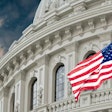
In the neurointerventional field, burnout is common, and it negatively affects both physicians and patients, according to a study published in the November issue of the Journal of Neurointerventional Surgery. But it could be mitigated with one simple solution: cash compensation for additional call.
There are several ways to mitigate burnout, and adequate compensation is particularly effective, wrote a team led by Dr. Kyle Fargen of Wake Forest University in Winston-Salem, NC.
"The powerful protective effect of compensation suggests that additional compensation for neurinterventional call, or changes in reimbursement (e.g., increased reimbursement values for emergent thrombectomy for stroke) may be one highly effective method for reducing burnout," the team noted.
High rates of burnout
Across specialties, more than half of physicians report experiencing burnout, and physicians and medical students have higher rates than the general population, Fargen and colleagues wrote (J Neurointerv Surg, November 2019, Vol. 11:11, pp. 1100-1104).
"The toll of burnout on healthcare is significant," the group wrote. "For the physician, burnout is associated with depression, substance abuse, and thoughts of suicide. ... For the patient, burnout is associated with poor patient care. Major medical errors are strongly correlated with burnout among surgeons and are associated with malpractice lawsuits. Together, these considerations make burnout a subject of great importance for patient safety and care."
Although about 50% of neurosurgeons and neurologists and more than 60% of radiologists report burnout symptoms, the prevalence of the condition and its risk factors haven't been studied among neurointerventionalists, according to Fargen and colleagues.
"The high-risk conditions treated, frequent call burden, overnight procedures, and regular interruption of family life suggest that neurointerventional physicians may be at high risk of burnout," the group wrote. "We sought to survey United States neurointerventional physicians to understand the prevalence of burnout and identify risk factors for burnout and professional dissatisfaction."
Fargen's team distributed an online survey that included 39 questions about neurointerventional practice and the 22-question Maslach Burnout Inventory-Human Services Survey to members of a number of U.S. neurointerventional physician societies, including the Society of Vascular and Interventional Neurology. From a potential sample size of up to 1,200 survey respondents, the researchers received 293 complete responses to both surveys.
More than half (56%) of respondents met criteria for burnout, the group found.
| Characteristics of survey respondents and burnout percentages | ||
| Variable | No. of respondents (% of total) | Percentage reporting burnout |
| Training | ||
| Radiology | 45.2% | 57% |
| Neurology | 18.7% | 52% |
| Neurosurgery | 36.1% | 57% |
| Practice setting | ||
| Academic (with residents/fellows) | 49.2% | 50% |
| Academic (without residents/fellows) | 16.6% | 67% |
| Private | 34.2% | 58% |
| Call frequency | ||
| Every day | 12% | 51% |
| Every other day | 37.9% | 54% |
| Every 3rd day | 27.1% | 61% |
| Every 4th day | 14.5% | 61% |
| Every 5th day or less | 8.5% | 50% |
| No. of hospitals covered on call | ||
| 1 | 57.4% | 50% |
| 2 | 17.9% | 67% |
| 3 | 10% | 66% |
| 4 or more | 14.7% | 59% |
| Years of practice | ||
| Less than 5 | 25.3% | 55% |
| 5-9 | 23.4% | 54% |
| 10-19 | 31.3% | 59% |
| More than 20 | 20% | 56% |
The researchers discovered that almost two-thirds of survey respondents (65.2%) reported feeling underappreciated by hospital leadership and that this factor -- as well as covering more than one hospital on call -- was strongly associated with burnout.
The team also found that 65.2% of survey respondents believed they were inadequately compensated for their work and that 40.6% had considered quitting their neurointerventional career in the past five years.
Show me the money
What can be done to mitigate burnout? More money can help, according to Fargen's group: Their study found a positive inverse correlation between burnout and payment for additional call.
"Additional compensation for a call was reported by nearly half of respondents (46%) and was identified as a strong protective factor against burnout," the team wrote. "Burnout prevalence was less than 40% in the nearly one-quarter of respondents (24%) who reported receiving at least $1,000 additional payment for each 24-hour call period. With each increase in call pay stratification, a 0.36 odds reduction in burnout risk was seen."
But don't forget more common interventions, such as wellness and mindfulness practices and work-life balance skills, the group concluded.
"Our data suggest that providing neurointerventional physicians with better tools to maintain a healthy work-life balance would be a further method of reducing burnout," the researchers wrote.




















